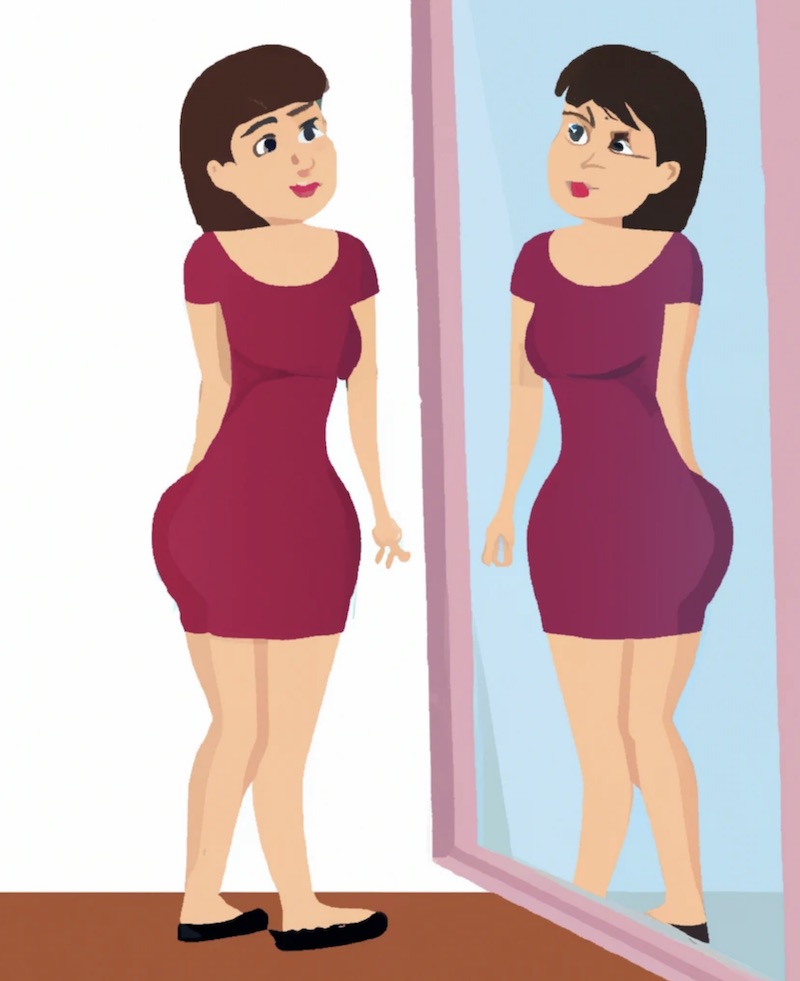What is Body Dysmorphic Disorder?
It is common for a person to feel unhappy about certain parts or areas of the body. The beauty industry can amplify this and cause people to become significantly preoccupied with how they look. These industries can play on common insecurities; however, for some people their preoccupation with these insecurities can begin to dominate their lives. In some cases, they may develop body dysmorphic disorder, also known as BDD or body dysmorphia.
When someone begins to focus entirely on their appearance, it could be considered a mental health issue. Body dysmorphic disorder is a condition in which a person perceives they have a flaw (in some cases the “flaw” is real). The flaw will become something they focus on obsessively. Eventually, this focus might preoccupy their time so much that it impacts their life, their job, and their friendships.
According to the criteria of Diagnostic and Statistical Manual of Mental Disorders 5th edition, DSM 5, to guide treatment. In order for a person to be diagnosed with body dysmorphic disorder:
- They must be preoccupied with at least one “perceived” flaw or defect in their physical appearance.
- Other people cannot see this flaw or deem it to be minor.
- They must engage in repetitive behaviours like reassurance seeking, constantly checking in the mirror, excessive grooming, or ongoing comparison of their appearance to that of others.
- Their preoccupation with the flaw causes significant distress or impairment in various areas of their life.
- They do not meet diagnostic criteria for eating disorders
It must be understood that this condition is considered to be a disorder of perception. It is a type of obsessive compulsive disorder and it is not an eating disorder. That being said, some people with BDD will also develop a meth addiction.

How Meth Affects Body Dysmorphic Disorder
Methamphetamine is a very powerful drug that can exacerbate the symptoms of body dysmorphic disorder. Sadly, the effects of meth use can be those that a person with BDD believes will benefit them. The primary effects include weight loss and appetite suppression. As a meth rehab in Thailand, our addiction specialists suggest that approximately 1 in 5 meth users will also suffer from a disorder such as body dysmorphic disorder.
Can Meth Use Cause BDD
Methamphetamine addiction does not cause BDD; however, it can cause the symptoms of the disorder to intensify. It is believed that BDD is genetic; however, environmental factors are possible. The symptoms of methamphetamine addiction can include:
- Anxiety
- Mood swings
- Bursts of intense euphoria
- Hallucinations
- Paranoia
- Extreme mood swings
- Insomnia
- Irritability
- Loss of appetite
- Weight loss
At low doses, methamphetamine causes an increase in energy and a decrease appetite. For a person who has body dysmorphic disorder, methamphetamine use might be considerably appealing. Apart from the weight loss and appetite reduction, methamphetamine might initially help a person with BDD to focus on other things in life other than the condition. For example, he or she might feel thinner while being less concerned about how they look. Should a person continue to use meth, they will build a tolerance to the drug and will require more of it to experience the same effects. Eventually, and with meth quit quickly, they may develop a dependency and addiction. If they try to quit, they will go through the symptoms of withdrawal. A meth rehab Thailand has to offer, such as Siam Rehab, can help with both the addiction and the disorder.
Can Meth Amplify Body Dysmorphic Disorder?
As a meth rehab that knows of patients who also have body dysmorphic disorder, methamphetamine can worsen the obsessive thinking, paranoia, and anxiety – all of which are characteristics of both issues. Severe meth addictions can cause significant emotional mood swings, insomnia, hallucinations, and paranoia. At even higher doses, the meth abuse can severely worsen the condition of body dysmorphic disorder and methamphetamine.
Additional Symptoms of BDD and Meth
The symptoms of methamphetamine use can result in serious distress for those who also have body dysmorphic disorder. As a meth rehab might explain to you, a person with a meth addiction and body dysmorphic disorder will be diagnosed as having a dual diagnosis. This means their treatment will require precise care as it is more complex than treatment for a single issue. When dual diagnosis is a factor, the person may be very stressed out because their BDD is worse and, at the same time, they are dealing with the methamphetamine addiction.
Choosing a Meth Rehab
One of the best treatments for body dysmorphic disorder is cognitive behavioural therapy. This type of therapy is a technique that will restrain a persons’ thought patterns so they have realistic, attainable goals. CBT treatment will also help the person to understand that their obsessive compulsive thinking is leading to far more harm than any good.
In order to treat the meth addiction, the person should go to a meth rehab in Thailand, or elsewhere, where they will receive inpatient care. It is advisable that a person with BDD and a meth addiction does not quit on their own. If you would like to know more about our affordable meth rehab in Thailand, and how we can treat a dual diagnosis, please call Siam Rehab today.

